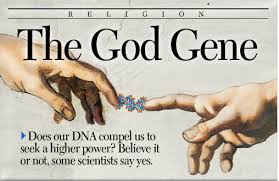 If, for centuries, scientific rationale and the spirit have been at opposite poles, in the best case the two ” opponents ” ignoring each other, for a while it breathes a different air: scientific research has changed its strategy and increasingly invading the universe spirituality.
If, for centuries, scientific rationale and the spirit have been at opposite poles, in the best case the two ” opponents ” ignoring each other, for a while it breathes a different air: scientific research has changed its strategy and increasingly invading the universe spirituality.
Most likely, the ancient yogis and buddhist scholars would’ve greatly appreciated literature written in the last years by a lot of neuroscientist who wanted to explore the connections between neurophysiology and the experiences of Zen practice, some trying to avoid philosophical abstractions and provide detailed information regarding studies on the brain, altered states of consciousness and meditation.
True, both – the buddhism, and science – trying to investigate the reality to explain it, but also true is that a good part of buddhist doctrine – reincarnation, for example – is by its very nature impossible to be subjected to experiments . That is why many buddhist beliefs are somehow ” safe ” from scientists criticism.
However, neuroscientific and the buddhist view of the universe are quite different. Buddhists believe that mental and physical sphere have equal influence on reality; like, those mental constructs that science considers imaginary perceptible, for buddhists are real . On the other hand, neuroscientists are materialists: believe that the mind can not be separated by physical circumstances that have given birth. At the same time, what buddhism has to offer for neuroscience – addressing the brain from external ” objective ” perspective ( or in ” third person ” as followers of Buddha would say ) – is a way to search the inner consciousness at first hand.
Currently, there are many neurologists that think neuroscience also have their own dogma – binomial mind-brain – contesting a so-called ” scientific reductionism ” which would always claimed that man is only what can be known. Argument? What is really Ego can not be solved by science, is not scientific type; when science claims that can provide the answer to such questions, commits a fundamental error, which then leave itself blinded.
Moreover, the claim that the scientific method is the only way of knowing is charged among other even as an unscientific claim: the existence of one true objective knowledge – scientific knowledge – would be just a philosophical statement and only as such could be argued.
[adsenseyu1]
Awakening the brain
Neuropsychologist and meditation teacher, Rick Hanson and Richard Mendius, authors of “Buddha’s Brain. Neuroscience of happiness, love and wisdom ‘, published by Parallel 45, are convinced that there is a transcendental element in the functioning of the mind, of consciousness, of the path to enlightenment, whatever we choose to call God, Spirit, Buddha, Earth or something else. ” Regardless of nature, it is by definition beyond the physical universe. Since it can be proved in any way, is important and is in the spirit of science to take into account as a viable option “, says Rick Hanson.
Any aspect of the mind that is not transcendental, have be based on the physical processes of the brain, explains Hanson and Mendius. ” Mental activity, conscious or unconscious fits on the neural activity as the image of a sunset on a computer screen fits on the cargo magnetic model on hard drive. Besides possible transcendental factors thr brain is the necessary condition and approximate sufficient for the mind. Approximate sufficient, because the brain is in a larger network of causes and biological and cultural conditions and is in turn affected by mind “.
The two researchers also believe that it may take another 350 years or more to fully understand the relationship between brain and mind, but in the meantime, a reasonable assumption would be that the mind is what your brain does ( the brain in action ). “Although in the past many neuroscience experts claimed that the mind is just brain activity, we can now analyze the link between the two dimensions of our life from another perspective.
If we consider the mind a relational process that regulate the flow of energy and information, we find that, in fact, we can use it to change our brain. The truth is that the way in which we focus, how willingly we direct the flow of energy and information from our neural circuits can directly modify the activity and brain structures. Its all about to know the steps that helps us realize this to build our wellbeing. ”
Buddhist from the laboratory
Who would have passed through the halls of the Department of Neuroscience 2002 University of Wisconsin would have witnessed some pretty unusual scene: would seen buddhist monks meditating in the lotus position inside a magnetic resonance device. At that time, the experiments authors ( authorized and encouraged by Dalai Lama himself ), neuroscientist Richard Davidson and his associate Antoine Lutz noted studying the mental activity diagrams of monks during physical exercises in which they focused on pure sympathy, certain regions of the brain seemed to be asleep, as the buddhists would have removed all mental barriers between their world and the universe around.
Even more interesting were considered then the differences between the brain activity of older monks, specifically those older in meditation, and novices antivity: the firsts highlight a significantly more pronounced activation of brain pathways associated with empathy and love; the more years of training in meditation, the more possessed connections between the frontal regions of the brain and emotion regions. In addition, there were major differences in the level of left prefrontal cortex area , an area involved in the development of feelings of happiness.
While the monks were deeply immersed in the exercise of compassion, activity in the left prefrontal region was amplified greatly, affecting the activity of the right region associated to negative feelings. And since it was about neural activity levels never observed until then in ” normal ” people, the researchers concluded that positive thinking is a skill that can be trained.
[adsenseyu1]
Neuroscientists have been the first who studied religious experience, discovering a link between temporal lobe epilepsy and the unexpected appearance of religious interest to patients. In a book published in 2001 entitled ” Why God Won’t Go Away “, Andrew Newberg, a researcher at the University of Pennsylvania, along with Eugene d’Aquili said that spiritual experiences are simply the ( inevitable ) pattern of brain ( ” the human brain has been configured genetically to encourage religious belief ” ) and that even a simple prayer has a remarkable effect on the brain.
In his studies, Newberg detect a sort of ” black out ” of the blood supply in the back of the brain, which governs the perception of the superEgo and the world and concluded that in neurological level, prayers and meditation induce the idea of union of the individual with the Creator by a ” real ” as possible feeling.
In other experiments, in franciscan nuns while in prayer was detected a reduced neural activity in the ” delegated ” area with orientation, which would provide nuns the almost ” tangible ” feeling of union with the divinity. According to Newberg and d’Aquili if it’s about mystical fervor, the feeling of sacredness or lighting, any spiritual condition reflects in a cerebral phenomenon concretely as possible and, surprisingly, the responsible brain area for how the religious is a person and one who’s activating to epileptics during a crisis.
Gods gene
In 2004, Dean Hammer, molecular biologist at the Oxford University National Cancer Institute published ” The God Gene “, in which explain how the spirituality varies from individual to individual depending on the level of certain neurotransmitters produced by brain: dopamine and serotonin. As it seems, responsible for the sense of union with the universe and all those sensations that characterize spiritual experience would be just these two mediators hormone, gene that regulates their production, Vmat2, being baptized, of course, ” God gene “.
According to the researcher, as the activity of this gene is more intense, thus embodied in the production of dopamine and serotonin, the more pronounced is the spirituallity of person. In a series of studies on twins, Hammer also demonstrated and that the main determinant factor of their spirituality is not the cultural environment in which they were born, educated and formed, but heredity.
Specifically, while identical twins ( monozygotic ) possess the same level of spirituality, fraternal twins ( dizygotic ) relates to faith differently from each other, even if they grew up in the same environment. Therefore, comments Hummer, through ” targeted ” brain stimulation can make a person smell a rose even if the rose does not exist or it can provide a mystical experience while doing shopping in a mall.







